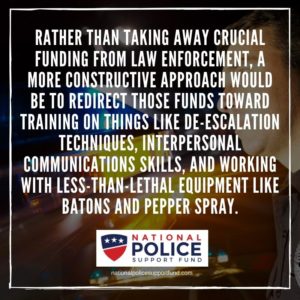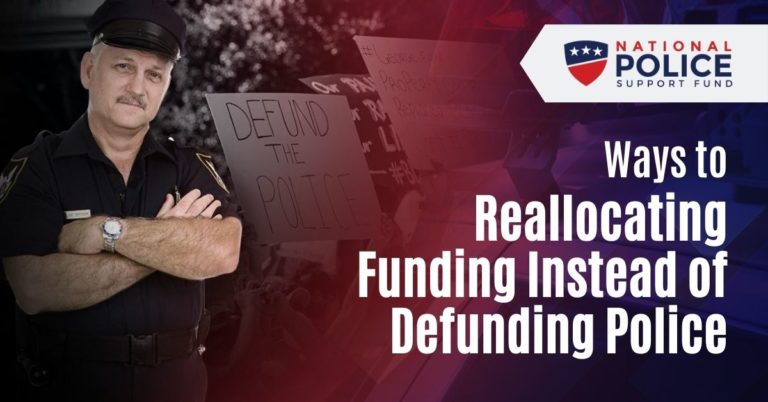Across the country, calls to “defund the police” have emerged from protesters following the deaths of George Floyd and others. While these calls are easy to share on social media and yell in the street, actually implementing them is much more difficult — and dangerous — for our communities.
Let’s dive into some ways that funding could be re-allocated in a more constructive way to reduce the number of police-involved deaths while still giving police the latitude they need to do their jobs day in and day out.
Training and the Use-of-Force Continuum
Rather than taking away crucial funding from law enforcement, a more constructive approach would be to redirect those funds toward training on things like de-escalation techniques, interpersonal communications skills, and working with less-than-lethal equipment like batons and pepper spray.

When confronted with a tense situation, police rely on deadly weapons because those are predominantly the tools they have at their disposal. Many police officers are not properly trained to de-escalate situations verbally before turning to the use of force.
There is an entire Use-of-Force Continuum created by the National Institute of Justice (NIJ), the research, development, and evaluation agency within the U.S. Department of Justice. According to its website, the NIJ “regularly engages with criminal and juvenile justice researchers and professionals to learn from their unique expertise and gather information on what knowledge, tools, and resources are necessary to reduce crime and advance justice.”
The Use-of-Force Continuum was published in 2009 to provide overarching guidance to the standards that local law enforcement agencies have. A typical situation might look something like this:
- A police officer’s presence is enough to resolve a situation
- Use of verbal force in the form of non-threatening commands, such as a request for identification.
- Use of bodily force, such as holds and joint locks, to restrain an individual — also known as empty-hand control
- Use of less-lethal methods like batons, pepper spray, or conducted energy devices (tasers)
- Use of lethal force as a last resort if a suspect poses a serious threat to the officer or another individual.
Common-sense solutions like this can go a long way toward improving relations between police and the public while giving officers a wide range of tools to use in the course of their work.
National Police Support Fund launched an awareness campaign and project highlighting the facts about defunding police. Get the Facts About Defunding Police here.









